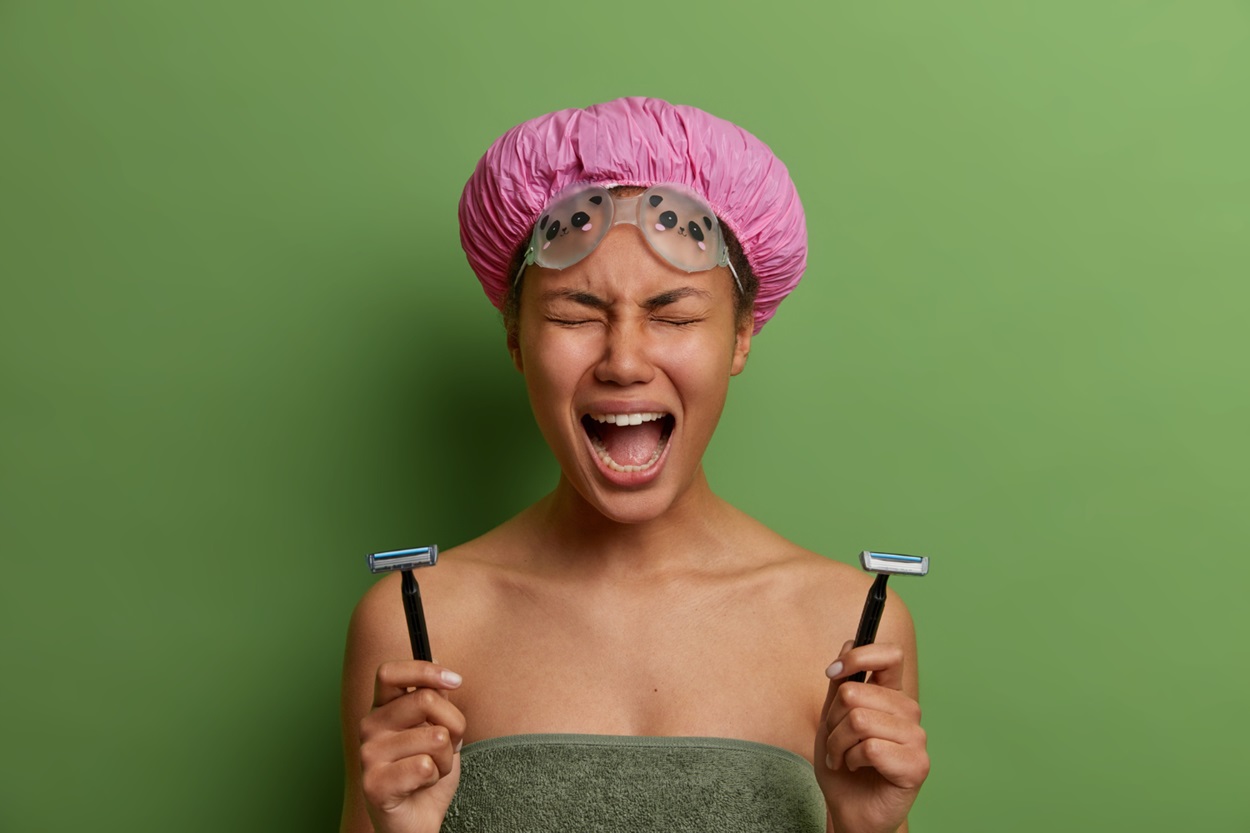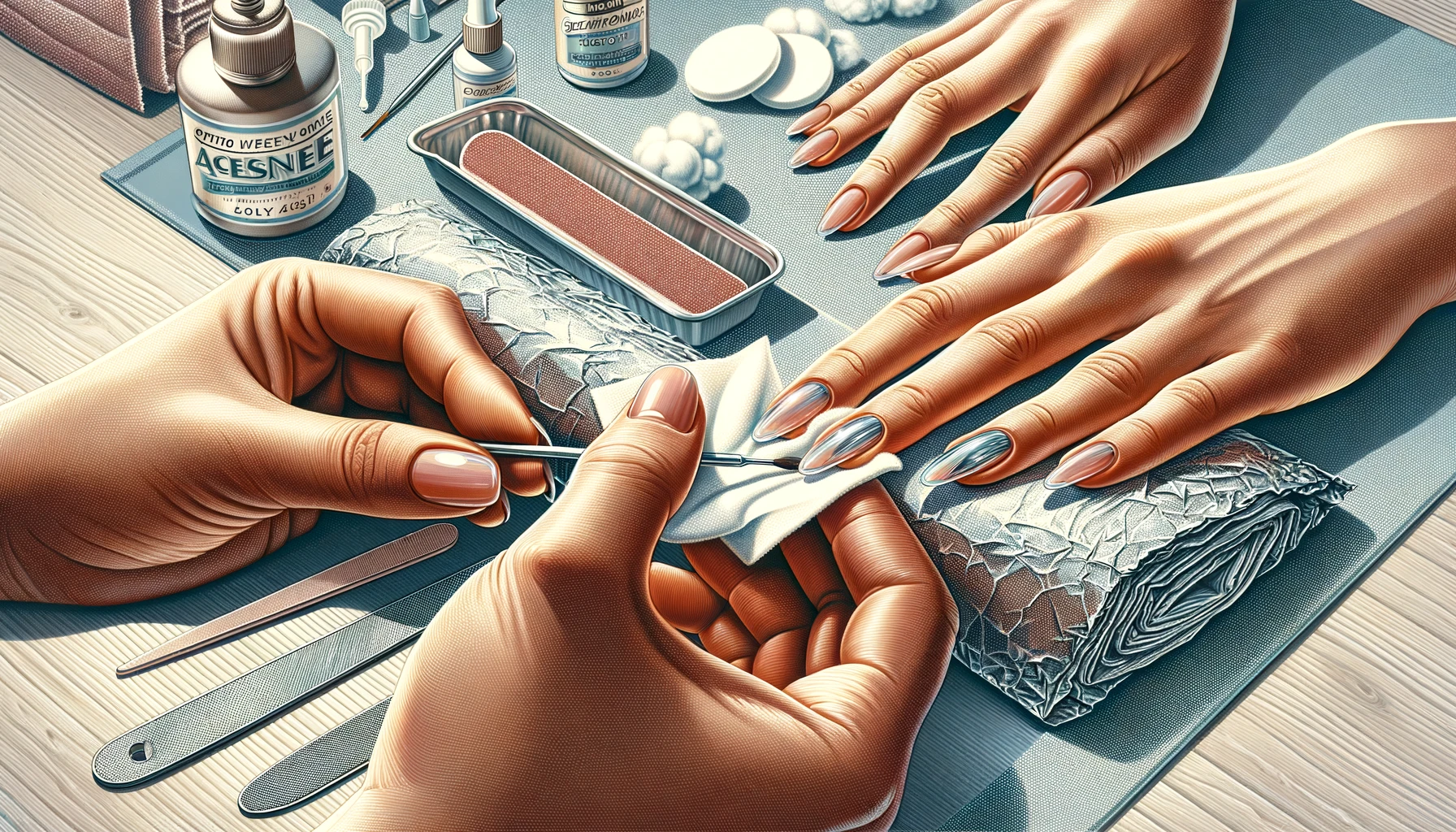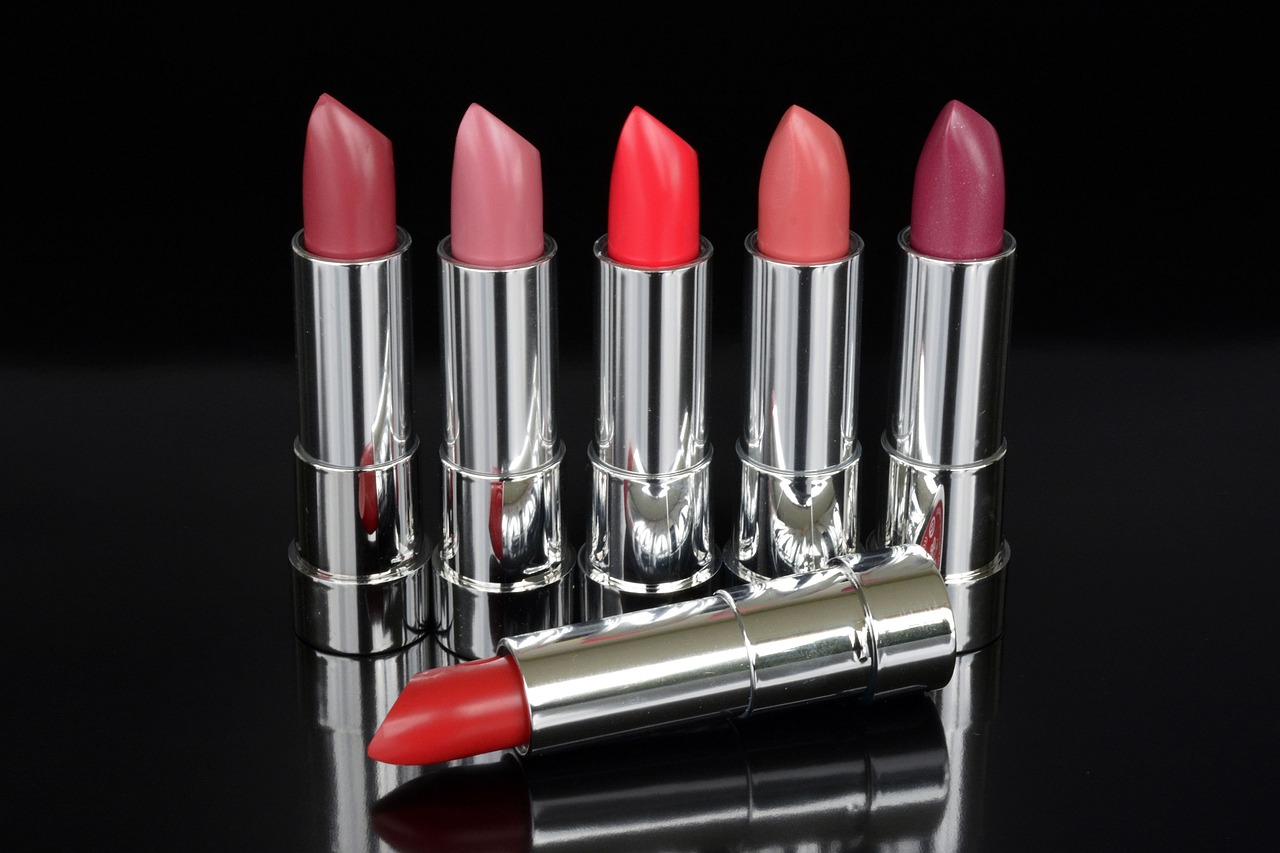Image by wayhomestudio on Freepik
Welcome, weary travelers on the road to smooth skin. You’ve just shaved, expecting to emerge from the bathroom like a phoenix from the ashes, only to look in the mirror and find your skin has adopted the topography of a pepperoni pizza. Ah, razor burn, the clingy sidekick of shaving, as unwanted as that one relative who always overstays their welcome.
But fear not, my bristled companions, for I shall arm you with the sacred knowledge to combat this fiery fiend. Prepare thyself for wisdom passed down through the ages, from the ancient Egyptians who probably had some sort of shaving mishap with their bronze razors, to your uncle Bob who still uses the disposable razor he bought in 2007.
The Art of Prevention: Don’t Get Burned
The first rule of Razor Burn Club? Don’t get it. Now, I know what you’re thinking. “Wow, what an insight! Why didn’t I think of that?” Hold your sarcastic applause, because there’s method to the madness.
1. Choose Your Weapon Wisely: Your razor is the Excalibur of bathroom tools. It must be chosen with care and must be as sharp as your wit. A dull blade can drag and pull at the hair, irritating your skin like your sibling ever did. Invest in a quality razor, and change the blades more often than you change your passwords.
2. Lubricate, for Goodness’ Sake!: The act of shaving is essentially dragging a very sharp piece of metal across your sensitive skin. Why would you do this dry? Use a shaving cream, gel, or even a conditioner if you’re in a pinch (though not the stuff from your hotel’s complimentary toiletries — trust me). The goal is to make your hairs stand at attention, soft and primed for the gentlest decapitation.
3. Hot and Steamy: Take a hot shower before you shave. The steam will open up your pores and soften your hair, making it easier to shave. It’s like cooking pasta; nobody likes it al dente on their face.
4. Go with the Grain: Shaving against the grain can give you a closer shave but at the cost of potential irritation. Instead, go with the grain, like following the natural order of things – you wouldn’t pet a cat backwards unless you fancy a swipe.
5. Aftercare is not Just for Tattoos: After you’ve shaved, rinse your face (or any other part of your body) with cold water to close those pores back up. Apply an alcohol-free aftershave balm. Alcohol on fresh razor burn is the equivalent of a lemon juice slip-n-slide: unnecessary and painful.
Treatment: Because Sometimes Life Burns
But let’s say you’ve ignored the prophetic advice above, or perhaps you’ve done everything right, and your skin is just a rebellious spirit refusing to conform. Here’s how to put out the fire:
1. The Cold Truth: Apply a cold compress to the inflamed area. This is like giving your skin a chill pill, reducing inflammation and redness.
2. Aloe Vera: Nature’s Kiss: Slather on some aloe vera, the go-to for all things burny and hurty. It’s like a mother’s soothing touch, except it’s a plant, and it doesn’t ask if you’re seeing anyone yet.
3. Moisturize, Then Moisturize Again: Keep the area moisturized with a fragrance-free lotion. Fragrance in your moisturizer can make your skin throw a tantrum like a toddler that isn’t allowed to have candy.
4. Patience, Young Padawan: Give your skin some time to heal. Shave less frequently if you can, letting your skin recover. It’s like a bad relationship; sometimes you just need a break.
5. Tea Tree Oil – The Potion of Healing: In the apothecary of skin care, tea tree oil is the wizard. A drop or two of this potent potion can help disinfect and soothe the savage beast of irritation. Just remember, it’s powerful stuff, and like listening to your favorite song on repeat, too much of a good thing can indeed become a very bad thing.
6. Witch Hazel – The Enchantress of Soothing: Apply the magical elixir known as witch hazel, a natural astringent that can calm the tempest of your skin’s discontent. It’s like sending in a peacekeeping force to settle the dispute between your face and your razor.
7. Hydrocortisone Cream – The Shield of Calm: For those times when the burn is less of a flicker and more of a conflagration, a dab of hydrocortisone cream can be your shield. It’s the diplomatic negotiator that eases the tension and tells your skin, “Let’s all just get along.”
8. Aspirin Paste – The Alchemist’s Dream: Crush a couple of aspirins, add a smidge of water, and apply this alchemical paste to the afflicted area. Aspirin contains salicylic acid, which can exfoliate the skin and prevent ingrown hairs. It’s like using magic sandpaper, but much less abrasive and a lot more scientific.
9. Cucumber and Milk Mask – The Dynamic Duo: If your skin is staging a revolt, calm the insurrection with slices of cucumber and milk. The duo works like a charm to reduce inflammation and soothe the skin. It’s the Batman and Robin of your bathroom routine, minus the capes and the need for vengeance.
10. Embrace the Beard – The Path of the Warrior: And if all else fails, consider embracing the noble path of the bearded warrior. Let your facial follicles flourish. Sometimes, the best way to win a battle is not to fight it at all.
Aftershave Rituals: The Dance of the Smooth-Faced Sages
Now, let’s not forget the sacred aftershave rituals that the sages of smooth faces have been practicing in secret. These rituals are designed to fortify the skin’s defenses and provide a protective barrier against the harsh elements of the world, also known as your razor.
1. Aftershave Balm – The Armor of Moisture: Invest in a good aftershave balm that doesn’t contain alcohol. Your skin has just been through a battle; it deserves some R&R, not a splash of stinging alcohol. It’s like offering someone who’s just run a marathon a pair of stiletto heels to walk home in.
2. The Pat-Down Technique – The Gentleman’s Pat: When applying anything to your freshly shaven skin, practice the gentleman’s pat. No rubbing or smearing, just a soft, dignified pat-down. It’s the skincare equivalent of a polite round of applause for a performance well done.
3. Seek the Soothsayers – Professional Advice: If your razor burn is more tenacious than expected, seek the counsel of a dermatologist, the soothsayer of skincare. Sometimes, you need a Gandalf to guide your Frodo through the perilous journey of skin health.
There you have it, brave souls. You’re now equipped with the knowledge to enter the fray against razor burn and emerge victorious. May your blades be sharp, your hands steady, and your aftershave soothing. The next time you take up arms against the stubble of adversity, remember these teachings, and may the gods of dermatology smile upon you. Remember, in the game of shaves, you win, or you itch. Choose wisely.
Pro Tips for Burn-free Skin
- Blunt Blades Begone!: Procrastination may be your middle name when it comes to replacing your razor blade, but trust me, your skin is judging you, and it’s not afraid to retaliate. A dull blade is akin to mowing your lawn with a pair of scissors — not only ineffective but bound to end in tragedy.
- Technique Triumphs: It’s not just what you shave with, but how you wield your trusty tool. Use short, light strokes instead of long, pressure-heavy ones. It’s a shave, not a Zorro audition. You’re trying to remove stubble, not carve your initials into your skin.
- The Pre-Shave Ritual: If you think prepping your skin for a shave is for the overly fastidious, think again. Wash your face with warm water and a gentle cleanser to remove oil and dead skin that could clog your razor. It’s the difference between preparing a canvas for painting and just slinging paint at a dirty old fence.
- Timing is Everything: Your skin is more susceptible to irritation immediately after a shave. So schedule your shave-time when you can allow your skin some breathing room afterward, not when you’re about to strap on a helmet or wrap a winter scarf tight enough to create a greenhouse effect on your neck.
- Shaving Brush Mastery: If you want to go old school (and your face will thank you for it), use a shaving brush. Not only does it help lift the hair for a closer shave, but it also exfoliates the skin, reducing the chance of ingrown hairs, and it makes you feel like a dapper gent from a bygone era.
- The Nighttime Whisperer: Consider shaving at night. It allows your skin the entire night to recover before facing the harsh world again. Plus, it adds a mysterious allure to your nightly routine, as though you’re a secret agent prepping for nocturnal adventures.
- Listen to Your Skin: Sometimes your skin is like a moody cat; it doesn’t always want attention. If you’ve got a particularly bad case of razor burn, give shaving a rest for a few days. Remember, absence makes the heart grow fonder, and hopefully, your skin less inflamed.
- Diet and Hydration – The Inner Sanctuary: What you put inside your body can reflect on the outside. A well-hydrated body means well-hydrated skin, which is less prone to irritation. And a diet rich in omega-3 fatty acids can keep your skin supple and less angry when you drag a blade across it.
- Keep it Clean – The Razor Hygiene Oath: Your razor is not self-cleaning (unless you’ve got some futuristic razor I don’t know about, in which case, carry on). Rinse it thoroughly after each use and store it in a dry place. A damp blade breeds bacteria faster than rabbits in spring, and you don’t want a bacterial rave happening on your face.
- Patch Test Potions and Lotions: Before slathering any new product all over your shave-prone areas, do a patch test. Because the only thing worse than razor burn is an allergic reaction masquerading as razor burn.
FAQ: Navigating the Treacherous Waters of Razor Burn
Ah, a question as old as time. Or at least as old as razors. The frequency depends on your beard’s thickness and the frequency of your shaves, but a good rule of thumb is every 5-7 shaves. If you notice tugging or discomfort before then, it’s time to bid that blade adieu.
Daily shaving is the Everest for sensitive-skinned folk. It’s not impossible, but it requires preparation, the right tools, and a gentle touch. Consider using a single-blade razor and never skip the shaving cream or aftershave. If irritation persists, give your skin a break in between shaves.
Mother Nature’s got your back! Aloe vera, cold compresses, and tea tree oil are your herbal knights in shining armor. They can reduce inflammation and soothe your skin without a pharmacy trip. Just be sure to do a patch test first — even nature has a mischievous side.
They’re close relatives in the family of shaving woes but not identical twins. Razor burn is irritation right after shaving, while ingrown hairs are a sequel — painful little bumps that appear when hair grows back into the skin like a confused traveler.
Tread carefully, brave soul. If your aftershave contains alcohol, it may turn your razor burn into a firestorm of pain. Opt for an alcohol-free balm that soothes and moisturizes. It’s like sending in the peace corps instead of the marines.
Not necessarily. It’s like saying walking into Mordor more often makes it less perilous. The key is not frequency but technique, sharp blades, and proper skin care before and after each shave.
The same principles apply to the lands below your chin. Exfoliate gently before shaving, use a clean, sharp razor, shave in the direction of hair growth, and moisturize afterward. And never, under any circumstances, borrow someone else’s razor. That’s just a quest for disaster.
If your skin remains a battleground despite your best efforts, it’s time to consult a dermatologist. They’re the Gandalfs of skin woes and can offer personalized advice, prescriptions, or even just a reassuring nod that you’re on the right path.



